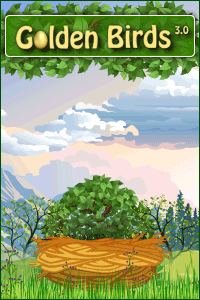Present Continuous or Present Progressive Verb Form
1. Present continuous, form
The present continuous of any verb is composed of two parts - the present tense of the verb to be + the present participle of the main verb.(The form of the present participle is: base+ing, e.g. talking, playing, moving, smiling)
| Affirmative | ||
| Subject | + to be | + base+ing |
| she | is | talking |
| Negative | ||
| Subject | + to be + not | + base+ing |
| she | is not (isn't) | talking |
| Interrogative | ||
| to be | + subject | + base+ing |
| is | she | talking? |
Example: to go, present continuous
| Affirmative | Negative | Interrogative |
| I am going | I am not going | Am I going? |
| You are going | You aren't going. | Are you going? |
| He, she, it is going | He, she, it isn't going | Is he, she, it going? |
| We are going | We aren't going | Are we going? |
| You are going | You aren't going | Are you going? |
| They are going | They aren't going | Are they going? |
2. Present Continuous, function
As with all tenses in English, the speaker's attitude is as important as the time of the action or event. When someone uses the present continuous, they are thinking about something that is unfinished or incomplete.The present continuous is used:
- to describe an action that is going on at this moment e.g.
You are using the Internet. You are studying English grammar. - to describe an action that is going on during this period of time or a trend, e.g.
Are you still working for the same company? More and more people are becoming vegetarian. - to describe an action or event in the future, which has already been planned or prepared (See also 'Ways of expressing the future) e.g.
We're going on holiday tomorrow. I'm meeting my boyfriend tonight. Are they visiting you next winter? - to describe a temporary event or situation, e.g.
He usually plays the drums, but he's playing bass guitar tonight. The weather forecast was good, but it's raining at the moment. - with 'always, forever, constantly', to describe and emphasise a continuing series of repeated actions, e.g.
Harry and Sally are always arguing! You're forever complaining about your mother-in-law!
3. Verbs that are not normally used in the continuous form
The verbs in the list below are normally used in the simple form, because they refer to states, rather than actions or processes:
List of common verbs normally used in simple form:
| Senses / Perception |
| feel*, hear, see*, smell, taste |
| Opinion |
| assume, believe, consider, doubt, feel (= think), find (= consider), suppose, think* |
| Mental states |
| forget, imagine, know, mean, notice, recognise, remember, understand |
| Emotions / desires |
| envy, fear, dislike, hate, hope, like, love, mind, prefer, regret, want, wish |
| Measurement |
| contain, cost, hold, measure, weigh |
| Others |
| look (=resemble), seem, be (in most cases), have (when it means to possess)* |
- 'Perception' verbs (see, hear, feel, taste, smell) are often used with 'can': e.g.
I can see... - * These verbs may be used in the continuous form but with a different meaning, compare:
- This coat feels nice and warm. (= your perception of the coat's qualities)
- John's feeling much better now (= his health is improving)
- She has three dogs and a cat. (=possession)
- She's having supper. (= She's eating)
- I can see Anthony in the garden (= perception)
- I'm seeing Anthony later (= We are planning to meet)
Examples
- I wish I was in Greece now.
- She wants to see him now.
- I don't understand why he is shouting.
- I feel we are making a mistake.
- This glass holds half a litre.
























0 comments